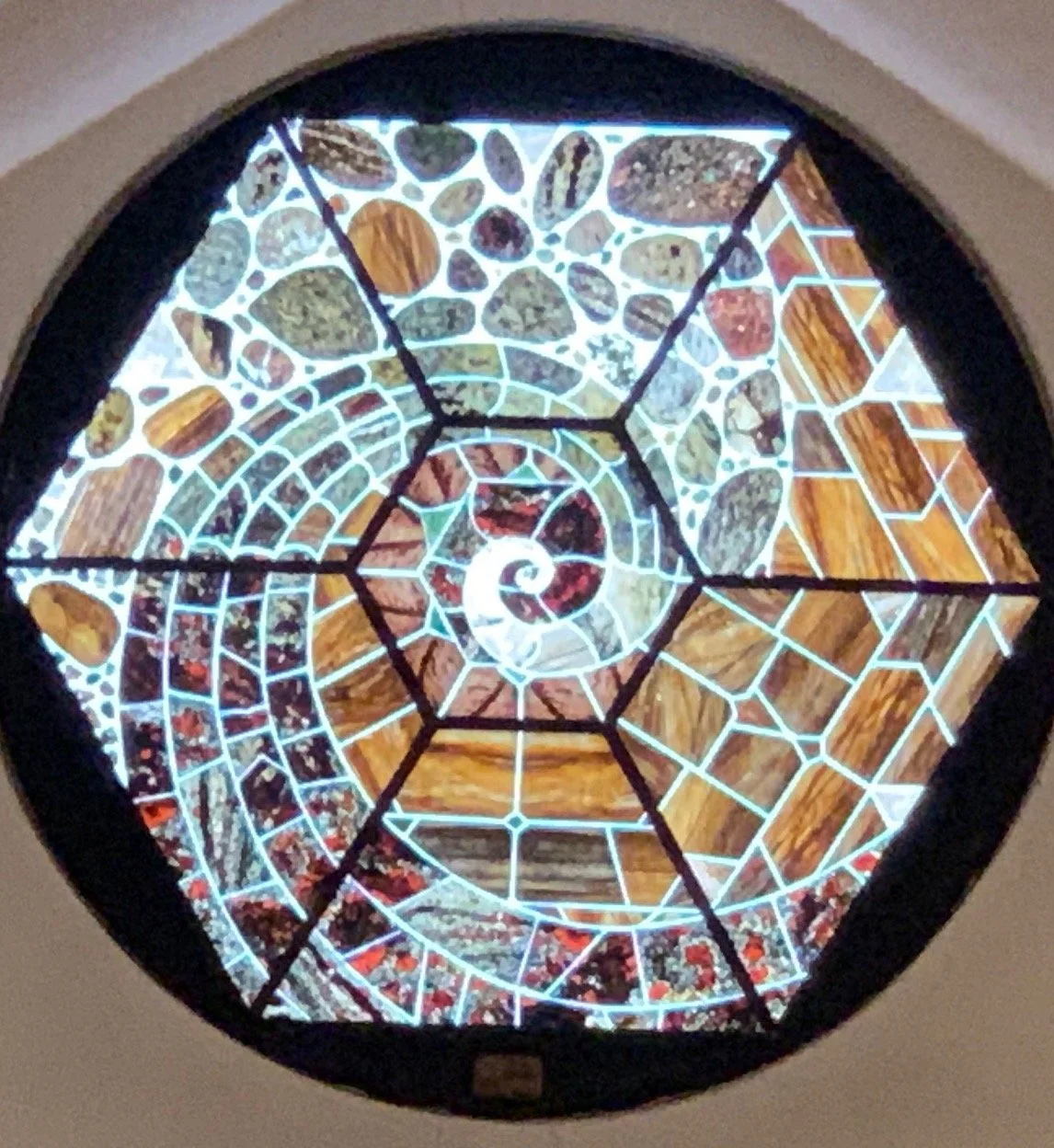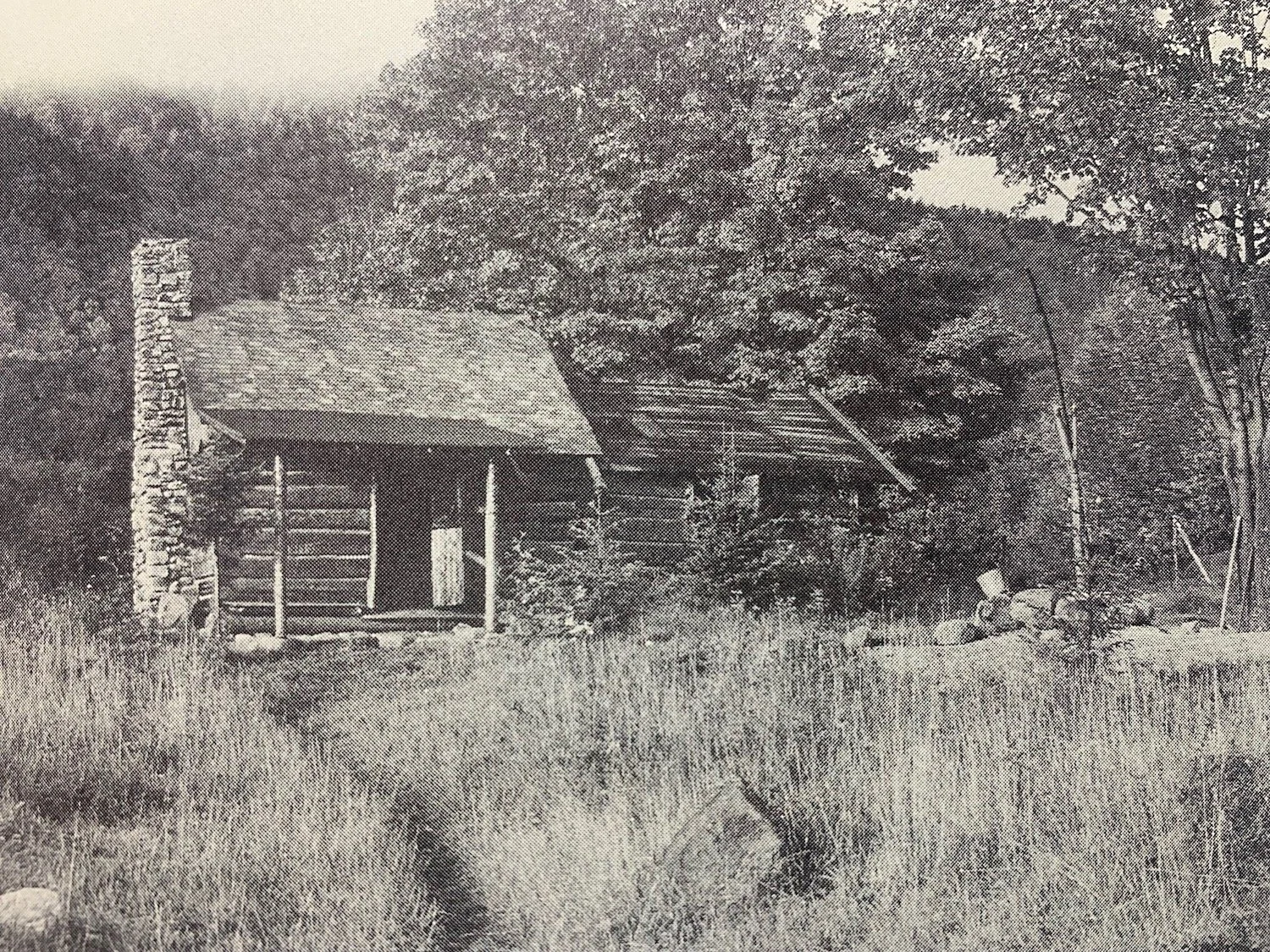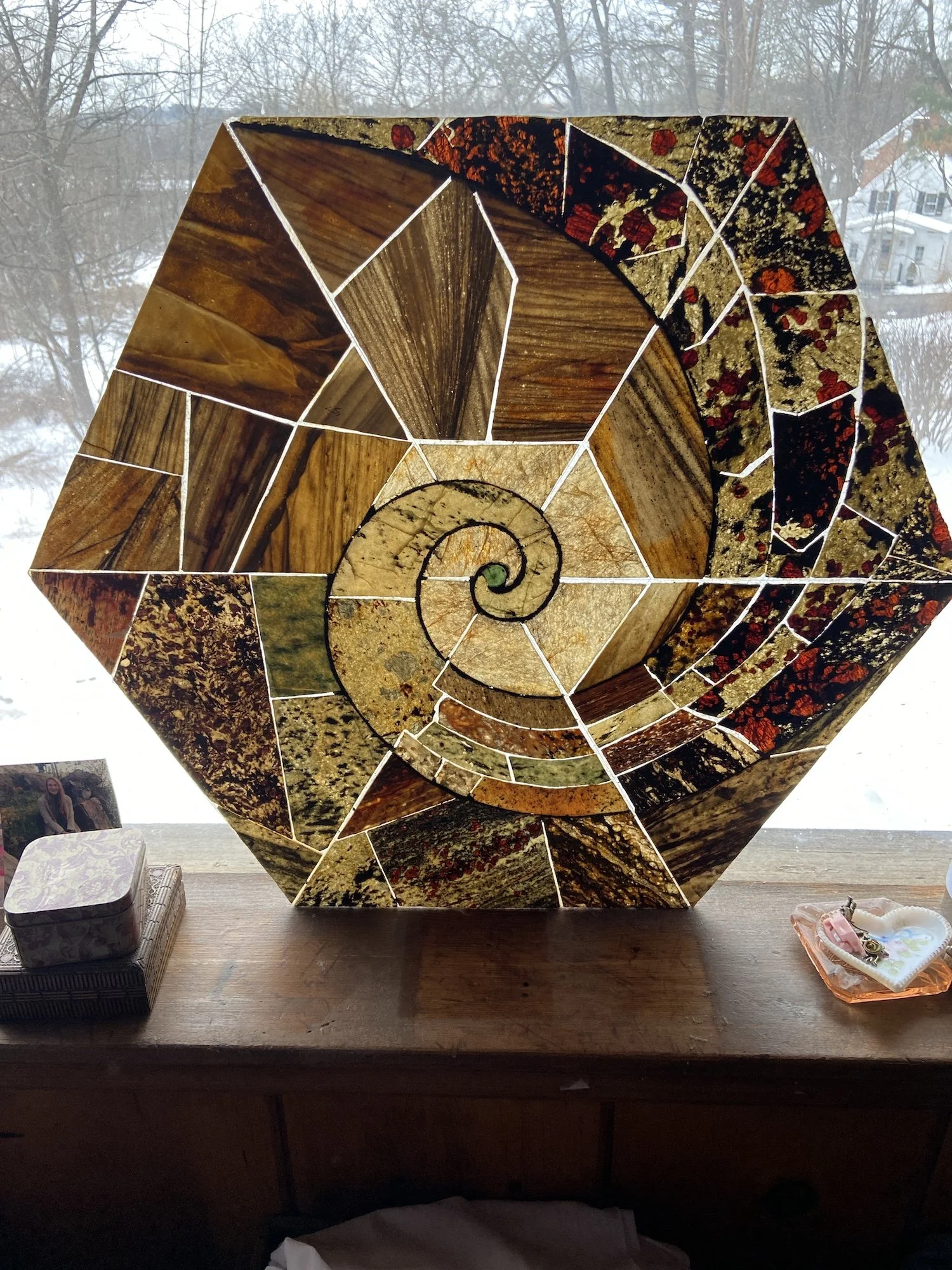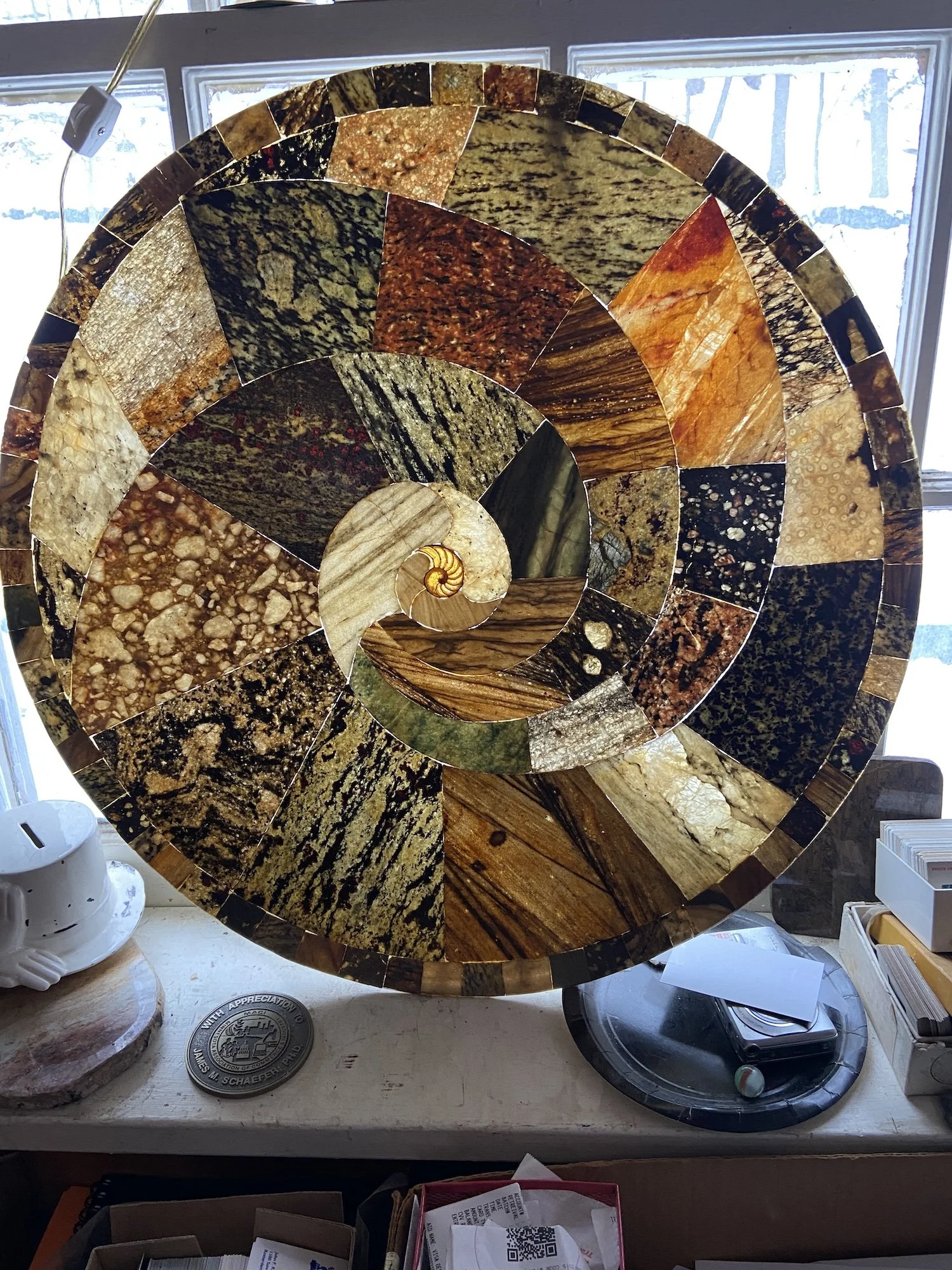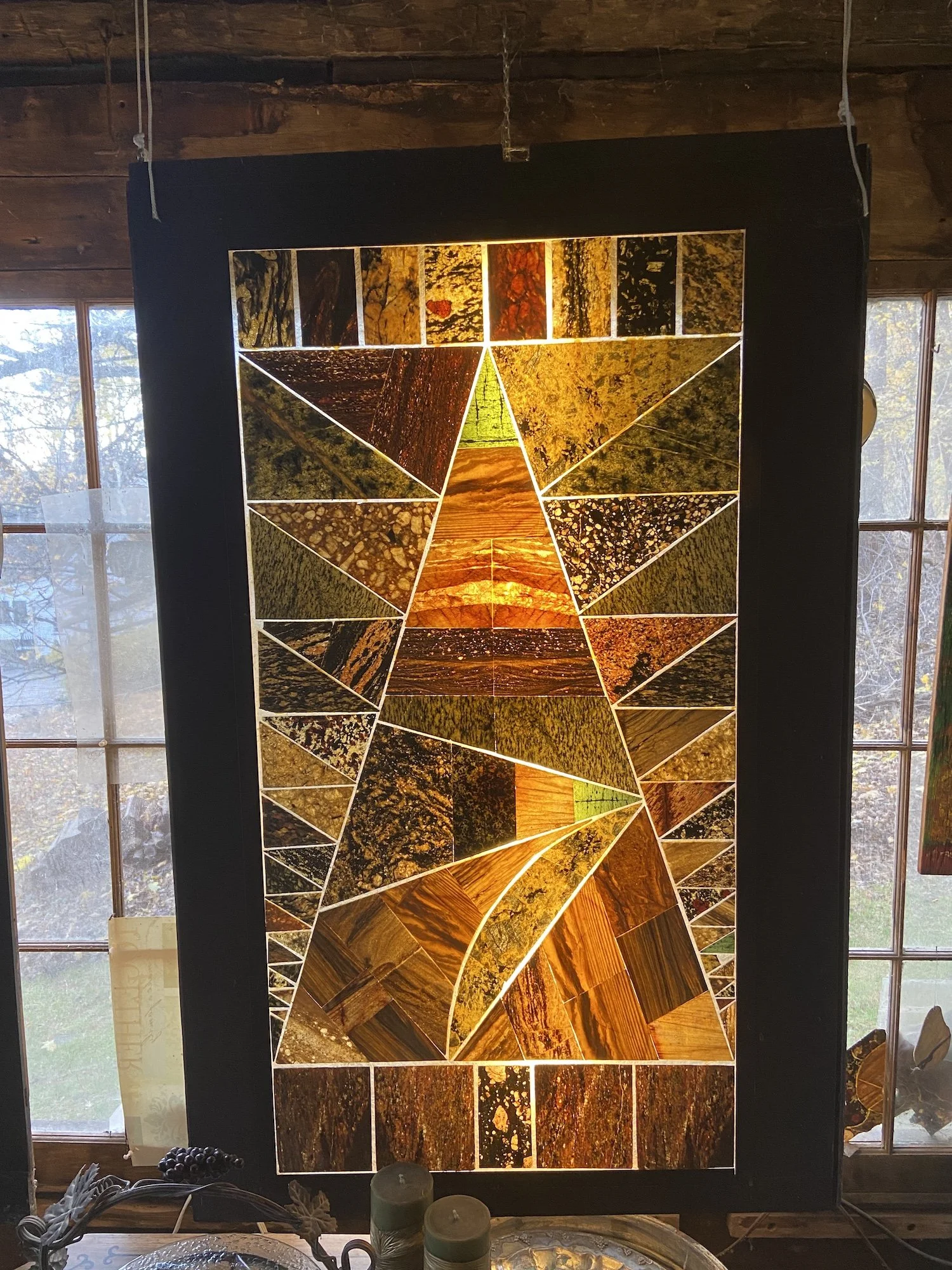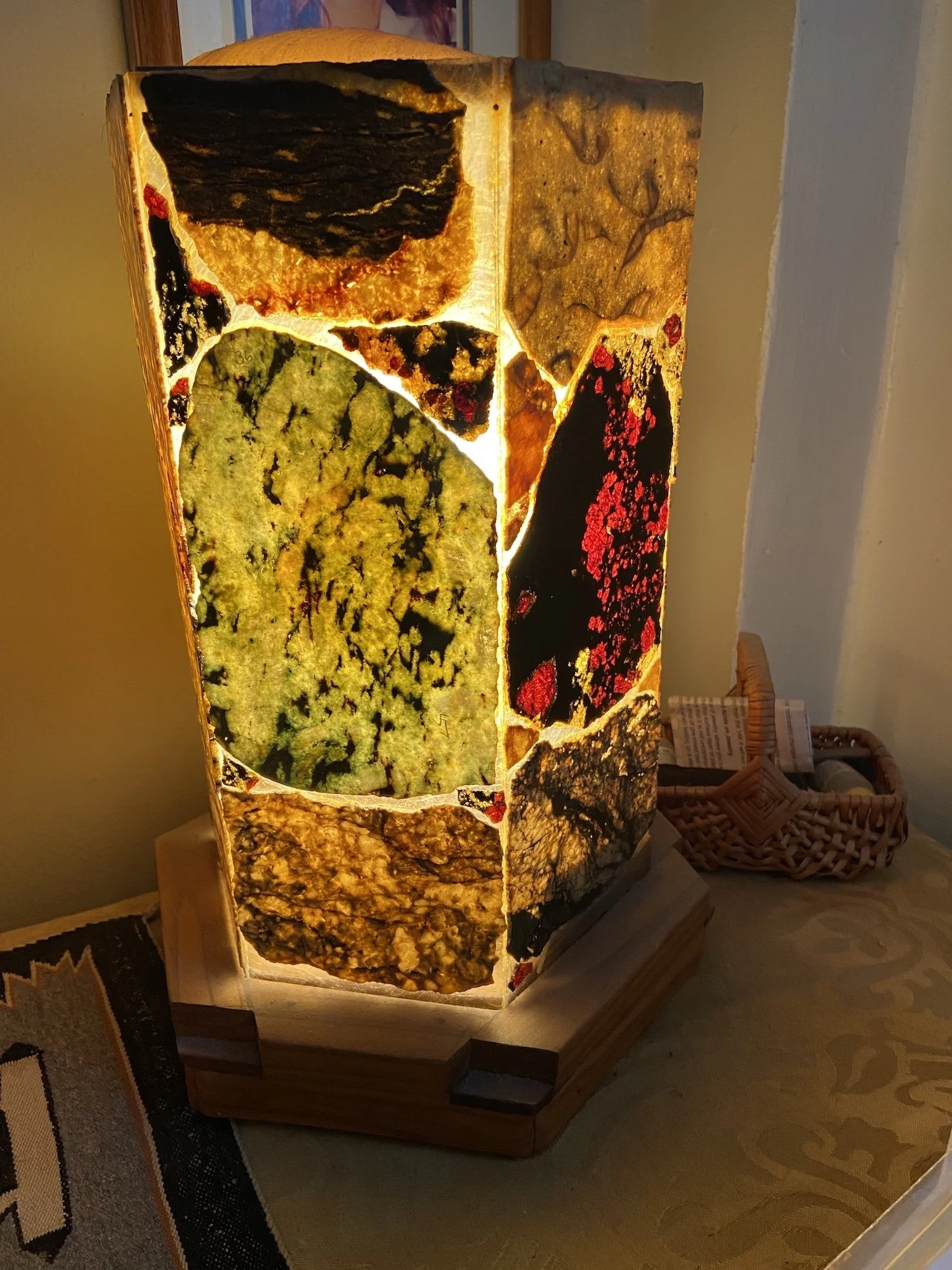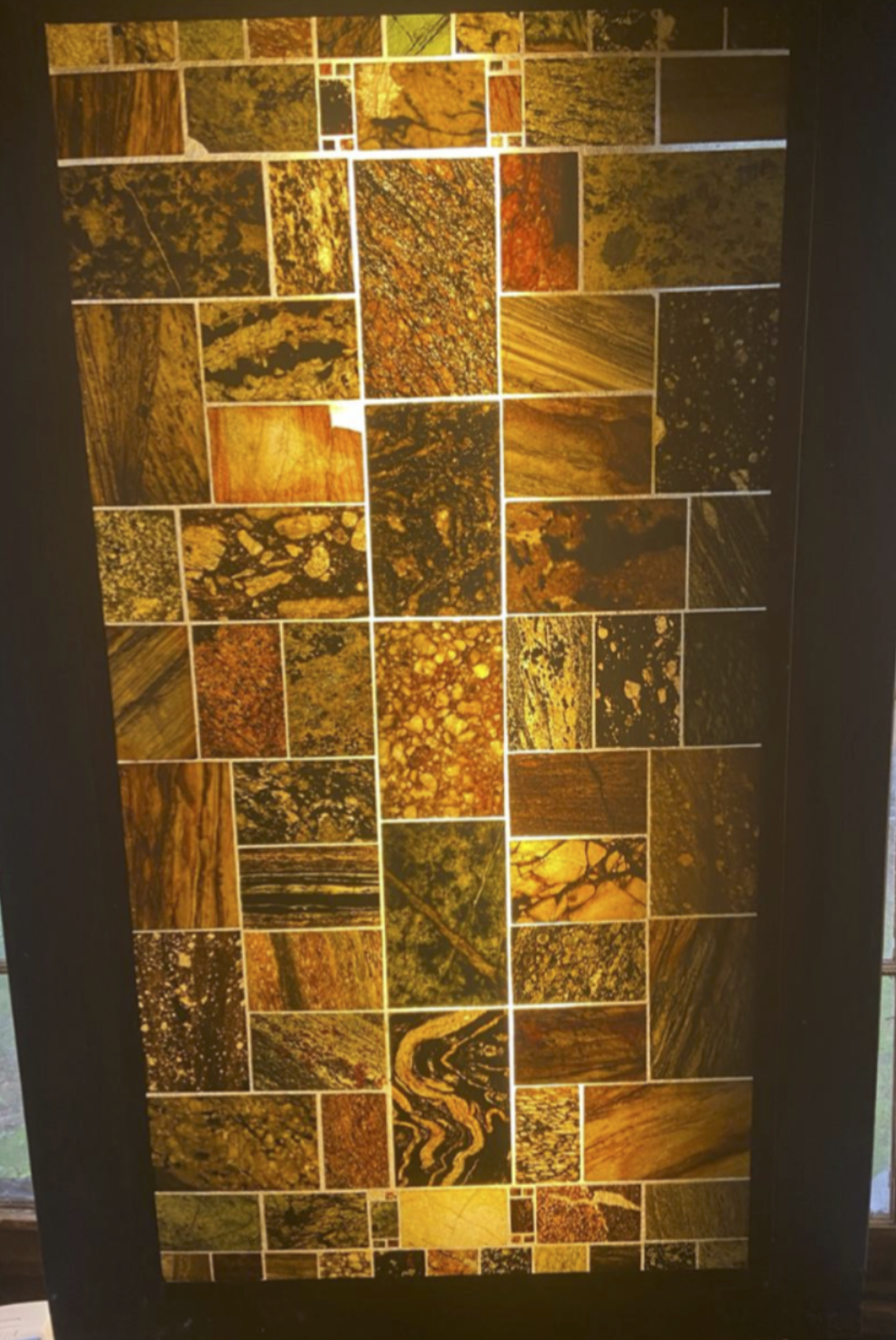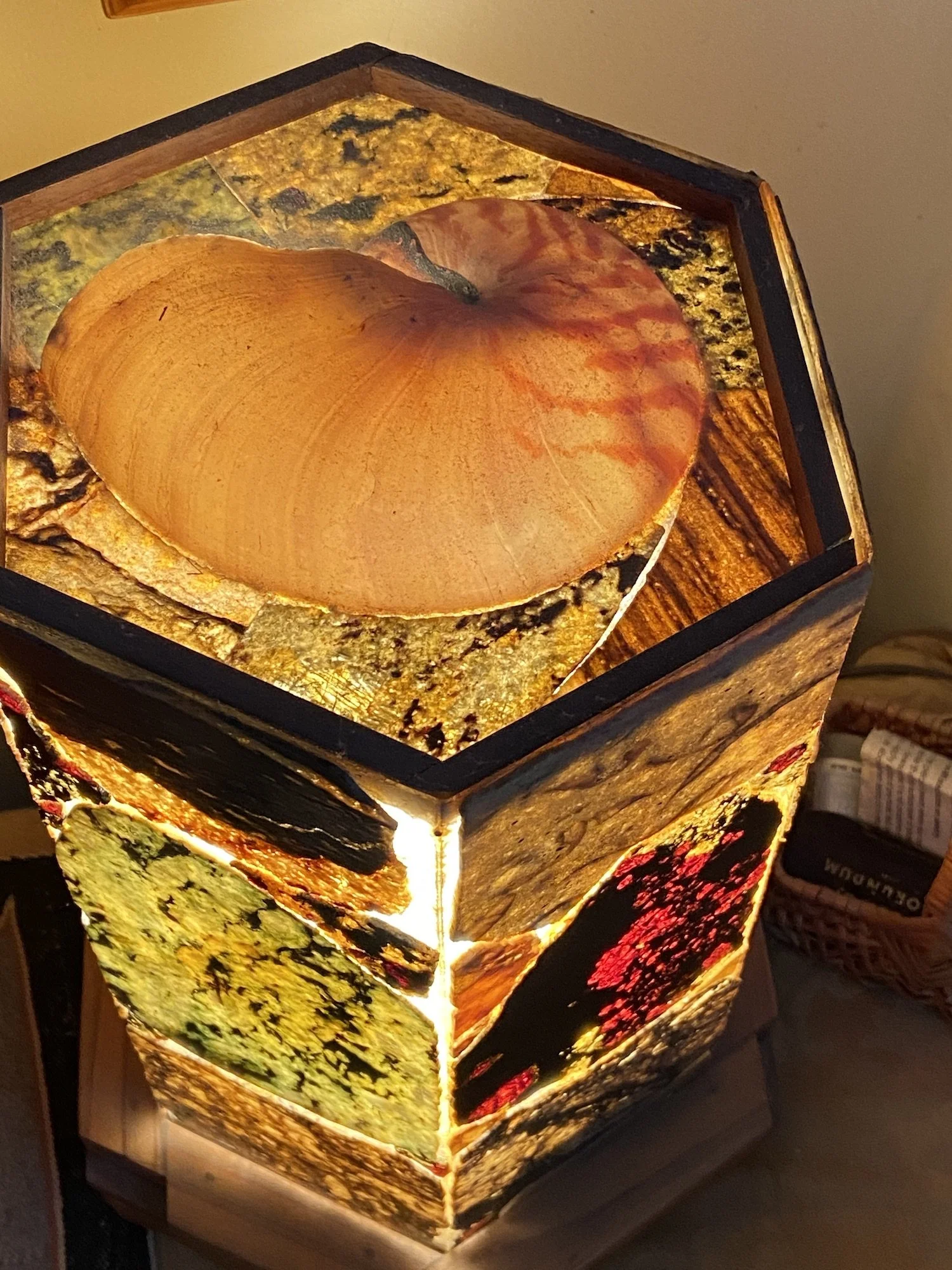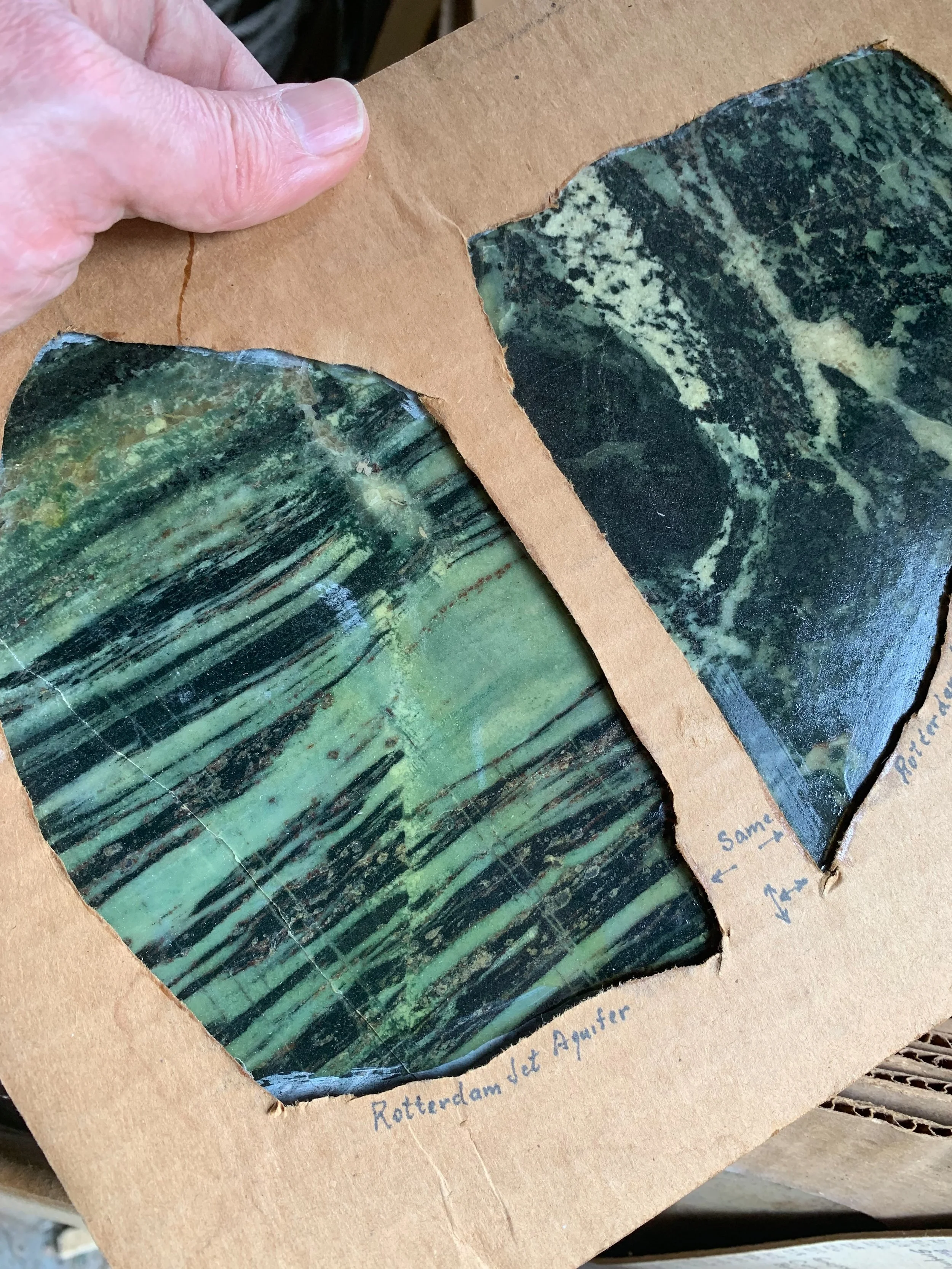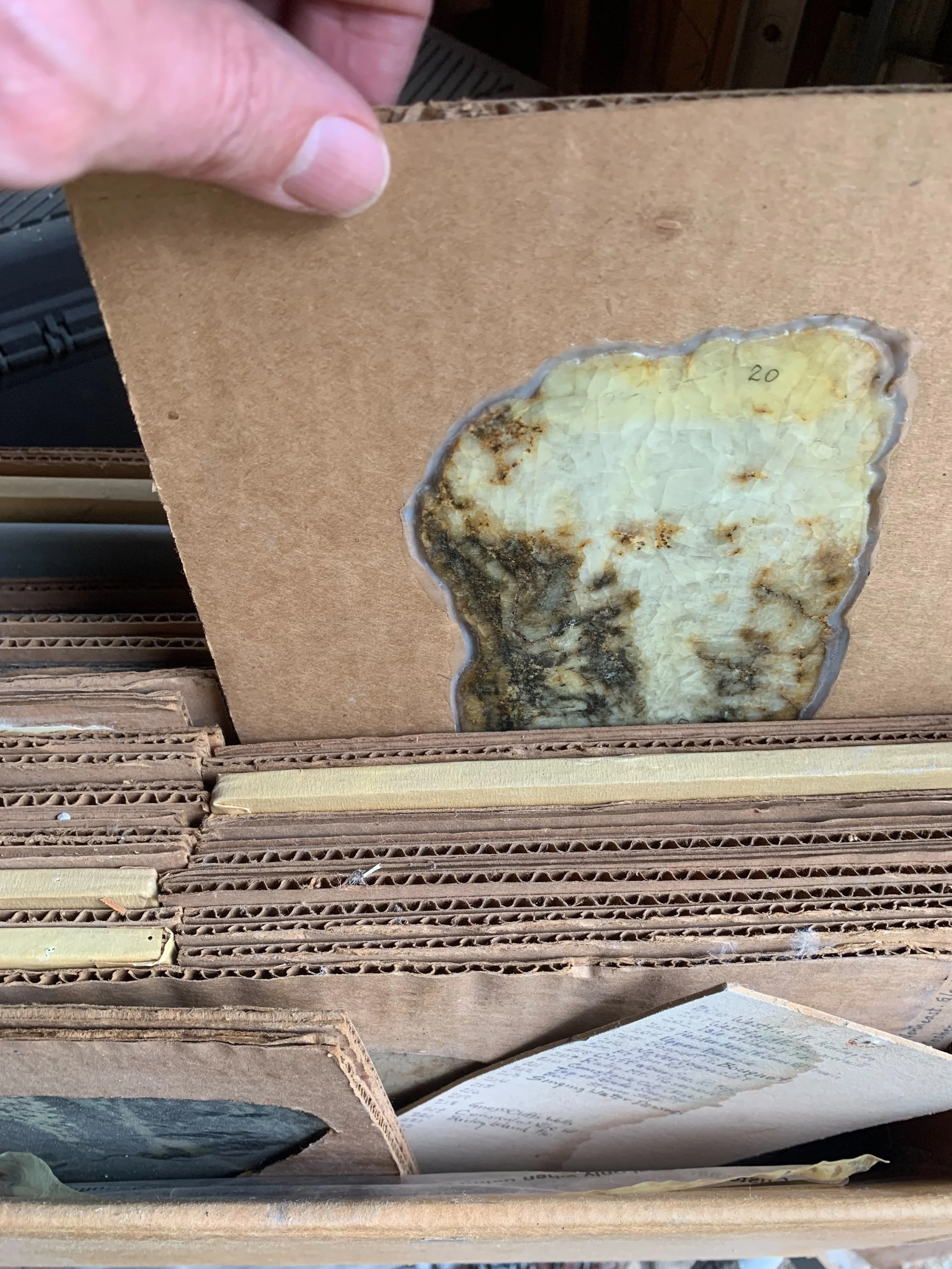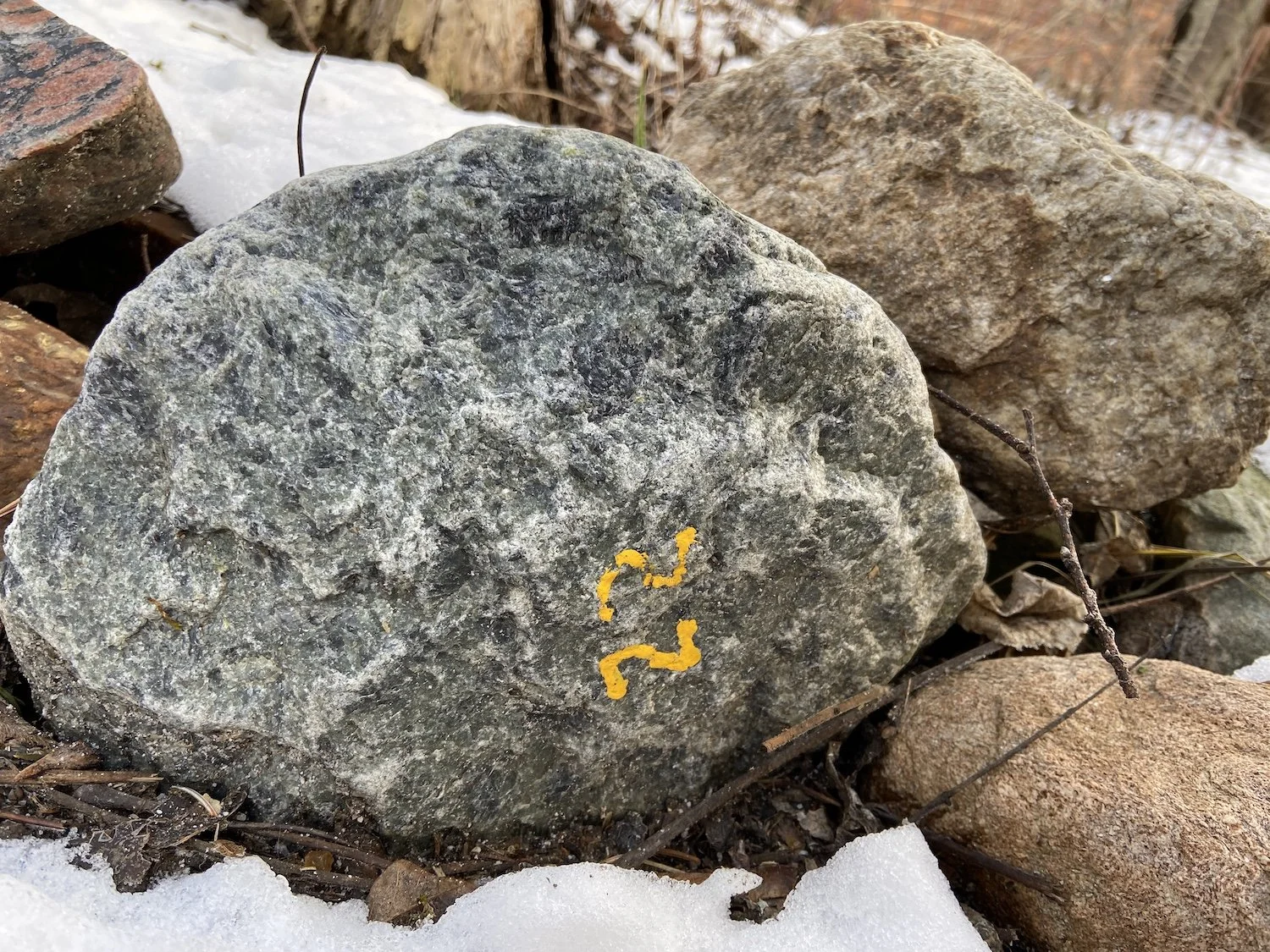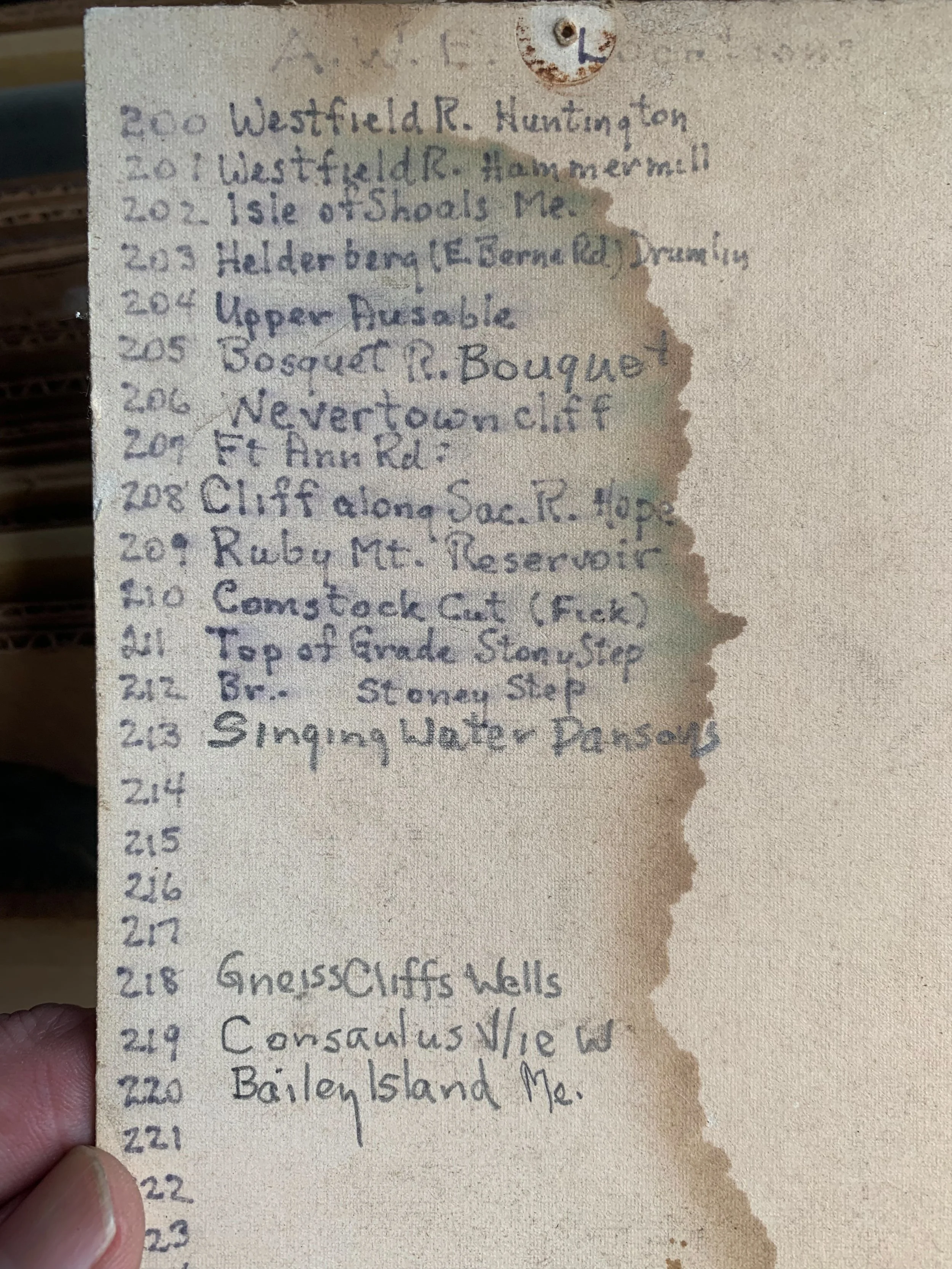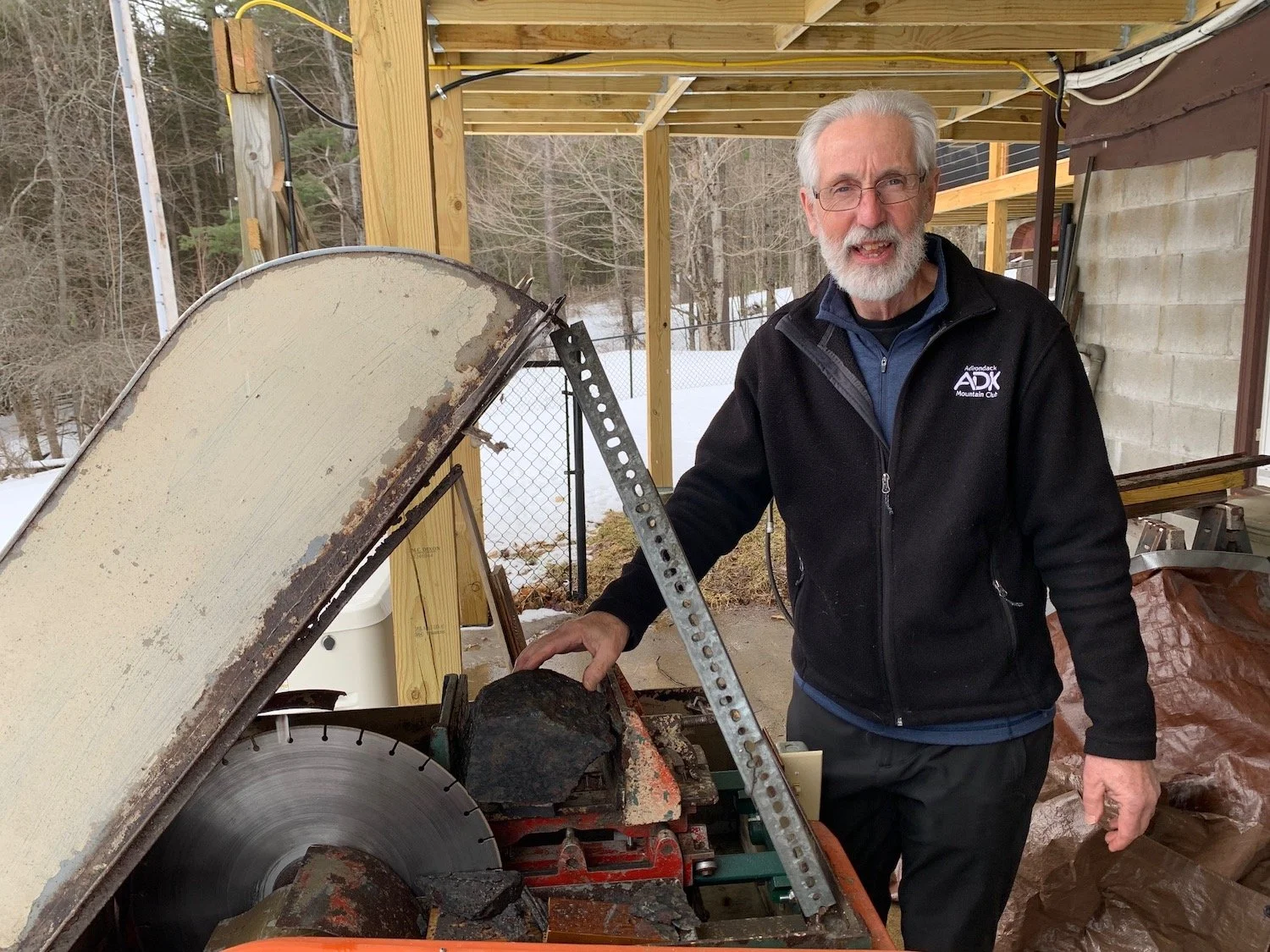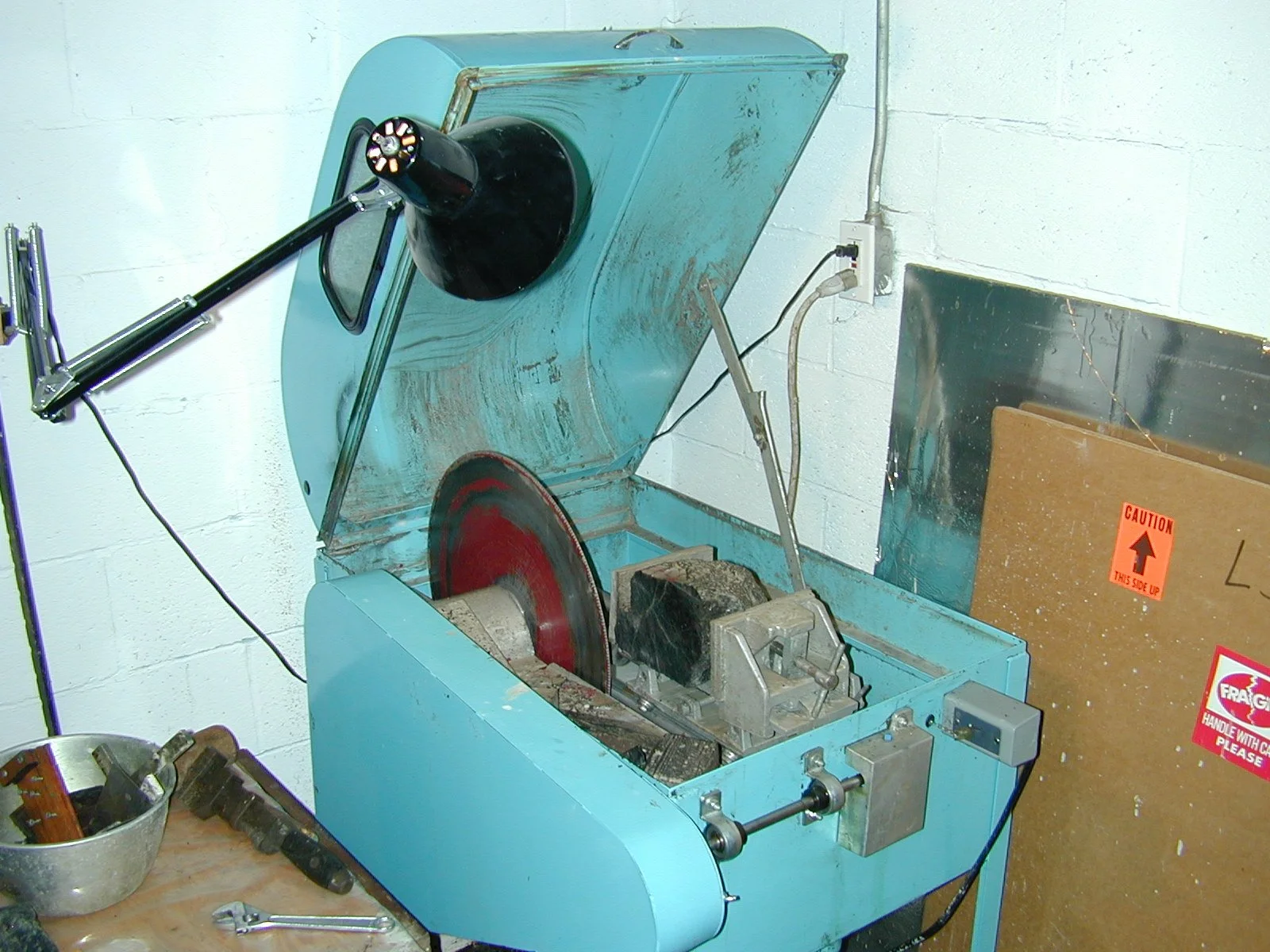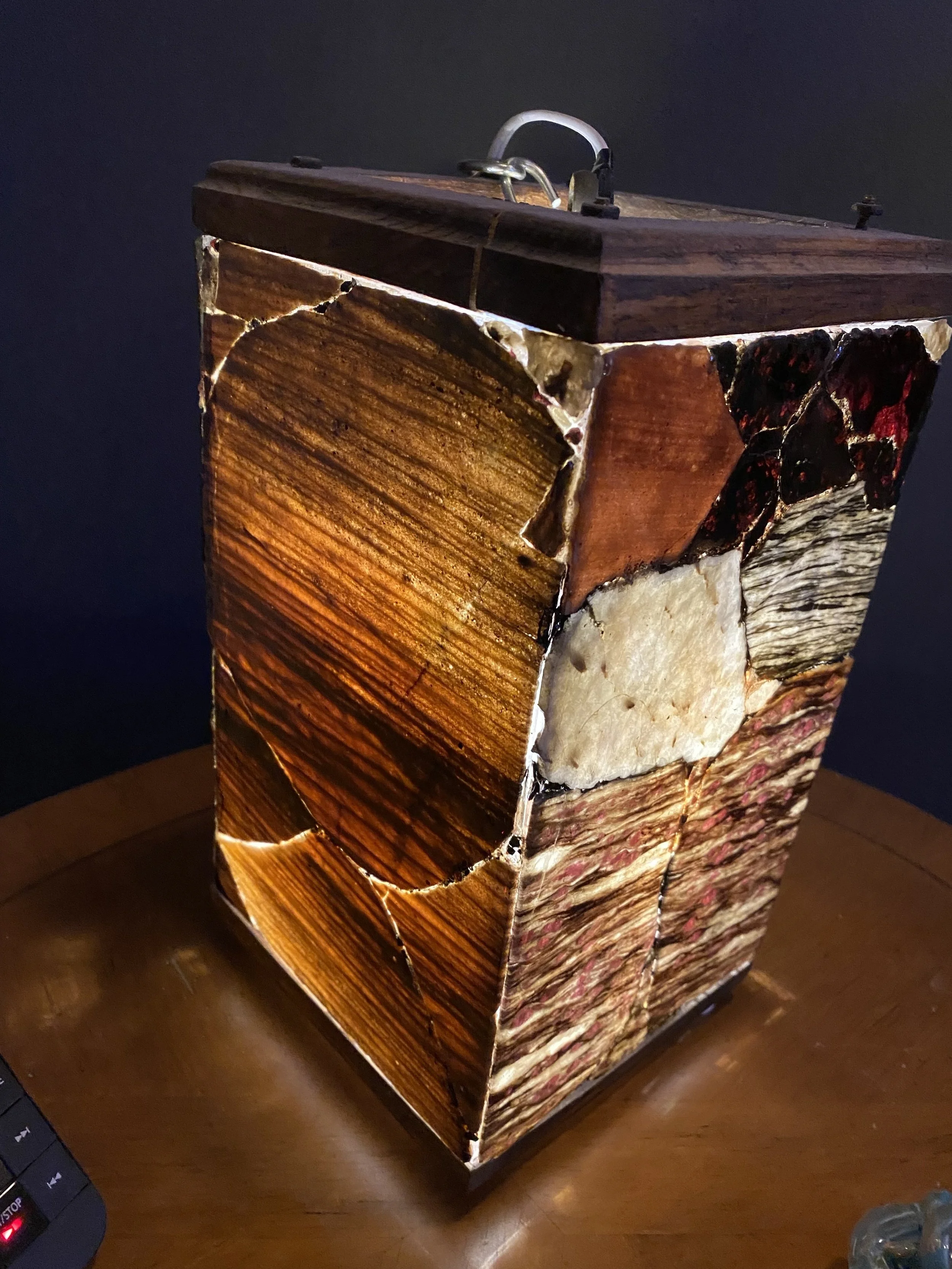The St. James Window
Vincent Schaefer’s Masterpiece
Installed at St. James Church in North Creek on
July 4, 1980, Vince’s 74th birthday.
A renowned atmospheric scientist, Vincent Schaefer is credited with the discovery of cloud seeding as a means for increasing precipitation in areas needing water.
He also invented the smoke generator that the U.S. military used extensively in World War II both to conceal ships and ground maneuvers from military aircraft. He first demonstrated it on Vroman’s Nose.
Vince also established the Mohawk Valley Hiking Club, which spun off the Schenectady Wintersports Club, which collaborated with a group of pioneering North Creek trail-builders and skiers in organizing the first Snow Train. It brought 378 winter sports enthusiasts from Schenectady to the slopes of Gore Mountain and made North Creek the nation’s most successful and pioneering ski community in the nation during the Great Depression.
Ancient Windows of the Earth
Vince demonstrated that, if you sliced an Adirondack rock thinner than a potato chip using a diamond-tipped saw blade, it became translucent. When backlit, it became as beautiful as stained glass.
Then he worked with it like stained glass, creating a dozen remarkable pieces that few people have seen because he didn’t sell his work. Collectively, he called these works Ancient Windows of the Earth.
He kept some and gave others to family and friends. He gave what he called both the “Altar Window” and the “St. James Window” to St. James Church in North Creek. That had been the Schaefer family’s summer church since Peter and Rose bought their cabin in Baker Mills so that Rose could escape the ragweed, which gave her respiratory problems so serious they nearly killed her.
Vince and his younger brother Paul purchased their own cabin in 1926 when Vince was in his early 20s and Paul was still in his teens. They had not even finished high school because Peter and Rose needed them to contribute to the family finances. They were working good jobs, Paul as a carpenter and Vince as an apprentice machinist at GE.
Vince and Paul scraped up enough money to buy their own cabin on Edwards Hill Road when they were in their early 20s. Paul, who would become New York’s leading conservationist for a half-century, described this “moonshiner’s cabin” in his Thoreau-like memoir, Adirondack Cabin Country:
It was a simple-structure of adz-hewn logs, eight or twelve inches in diameter. Though its logs were weathered by nearly a century of storms and its roof layered patch upon patch, it became our pride and joy at once. It had but two rooms, one with a table, chairs, and a wood stove, and the other with bunks. As we were able, we added a fireplace and then a well with a sweep, rope, and pail to lift the cold, nectarlike water from its depths.
With a supremely curious and inventive mind, Vince was fascinated both by the earth’s atmosphere and its geology.
“When I first explored the Adirondacks, I was greatly intrigued with the wide variety and beauty of the gravel, cobblestones, and boulders that were visible in all of our streams," he wrote in Serendipity in Science, the autobiography that his son Jim and historian Don Rittner assembled and published posthumously 20 years after his death.
”Many years later, I was able to obtain equipment that permitted me to polish stones by tumbling, and then cutting thin slices from the cobblestones found in streams and gravel banks. These slices disclosed the beauty of the crystalline structures they possessed. After a few years I was able to develop techniques so as to obtain slices as large as seven inches by twelve inches and just four one-hundredths of an inch thick.”
Vince began to collect rocks from all over the Adirondacks, focusing especially on outcrops and residues of stream and glacial action. These mountains, he wrote, offered a "happy hunting ground" unrivaled by any other place in the world, thanks to its "wide variety of strata, the vast spread of age, and the complete set of geological forces that formed these mountains."
Vince designed the St. James window to relate to the lands surrounding North Creek and provided this chart to explain the symbolisms of the rocks he features. He particularly loved the garnet gneiss he found in the Barton Mine at Ruby Mountain and we see a lot of it this work. Click to enlarge either image.
Geometries
Vince produced this work as a prototype of the St. James Window. Note especially the spiral that starts at the center. Representing the Creator, this is made in the Divine Proportion, which is also known as the Golden Ratio, It’s thought to represent a perfect balance between symmetry and asymmetry.
Studies suggest that our brains are wired to prefer objects and images that incorporate the Golden Ratio, as these are processed more efficiently and are more pleasing to the eye. We find it especially in the spirals of shells, the patterns of flower petals, Islamic mosques, and Greek temples.
Vincent also was fascinated by Fibonacci spirals, which are named for the Italian mathematician who discovered their power in a series of numbers in which each number is the sum of the two preceding ones, typically starting with 0 and 1. Vince also explored the Golden Triangle, an isosceles triangle in which the sides forming the vertex are in the Golden Ratio to the base.
Vince’s Rock Index
“Dad was curious about the patterns of crystalline structures, which allowed him to trace certain rocks to their original quarry or place where the native stone was modified or transported in the direction of the ebb and flow of the ice sheets covering the Adirondacks.,” says Jim Schaefer.
“He also was trying to find the geological sequences of the area from rocks he found in various locations. He labeled each stone with a yellow number, and indexed more than 200 by type and area.”
"By studying the color, crystalline nature and general appearance of my slices, he was able to trace back to the original rock formations the trajectory of the great glacier that transported the rock to the point where he found it.
He determined that one boulder of pinkish porphyry that originated from a lava flow on the western shore of Lake Champlain had been carried to a gravel bank adjacent to along the Mohawk River above Schenectady.
The Diamond-Tipped Saw
"He used an 18-inch diamond blade that could take rocks up to eight inches,” says Greg Schaefer, who now owns the saw, having inherited it from his father Carl, who’s renowned for bringing to North Creek the first rope-tow in New York State, powered by the engine of a 1929 Buick. Both Carl and Greg also developed mastery in Adirondack rock-slicing.
“When cutting rock, some type of lubricant is needed,” Greg explains. “Drills, lathes, and sanders create dust, but the rock saw creates a ‘mist’ due to whatever oil is used. The mist can permeate and coat everything around.”
For this reason, says Greg, “I keep my saw outdoors, and mostly cut during milder weather.”
Vince eventually moved the saw to another room because it affected his mother’s respiration, Jim says.
Vince and Jim’s mother Lois lived in a home on Schermerhorn Road in Rotterdam that, in a nod to the land’s Dutch colonial past, they named Woestyne, Dutch for “wilderness.” Paul assisted in the two-year effort required to complete the house in 1935. Carl laid the brick and built the two fireplaces. Jim and his wife Kim live here today.
When Vince Schaefer upgraded to a newer model of his rock-slicer, he gave the first he bought to his brother Carl, who left it to his son Greg, who continues to practice the art Vince invented.
“My father's workshops were in the basement,” Jim says. “He had a wood-working shop, an experimental equipment room, a dark room, a microscope room, a film editing room and a writing area in front of the large limestone fireplace there. He worked in all of these rooms while conducting GE-related studies.”
“With the completion of our north addition, I now have adequate space for my machine tools, and was able to install my circular saw, turning lathe, drill press and sander, along with cabinets, shelves, and a workbench,” Vince wrote.
“When I left the Research Laboratory, I offered a token payment for all my laboratory equipment. This was accepted. Thus I was able to acquire my cold chambers, troughs, chemicals and all other equipment that I had accumulated over a 20-year period…It has served me well over the more than 20 years since I left the Laboratory, and I am still using much of it!”
The Matterhorn

